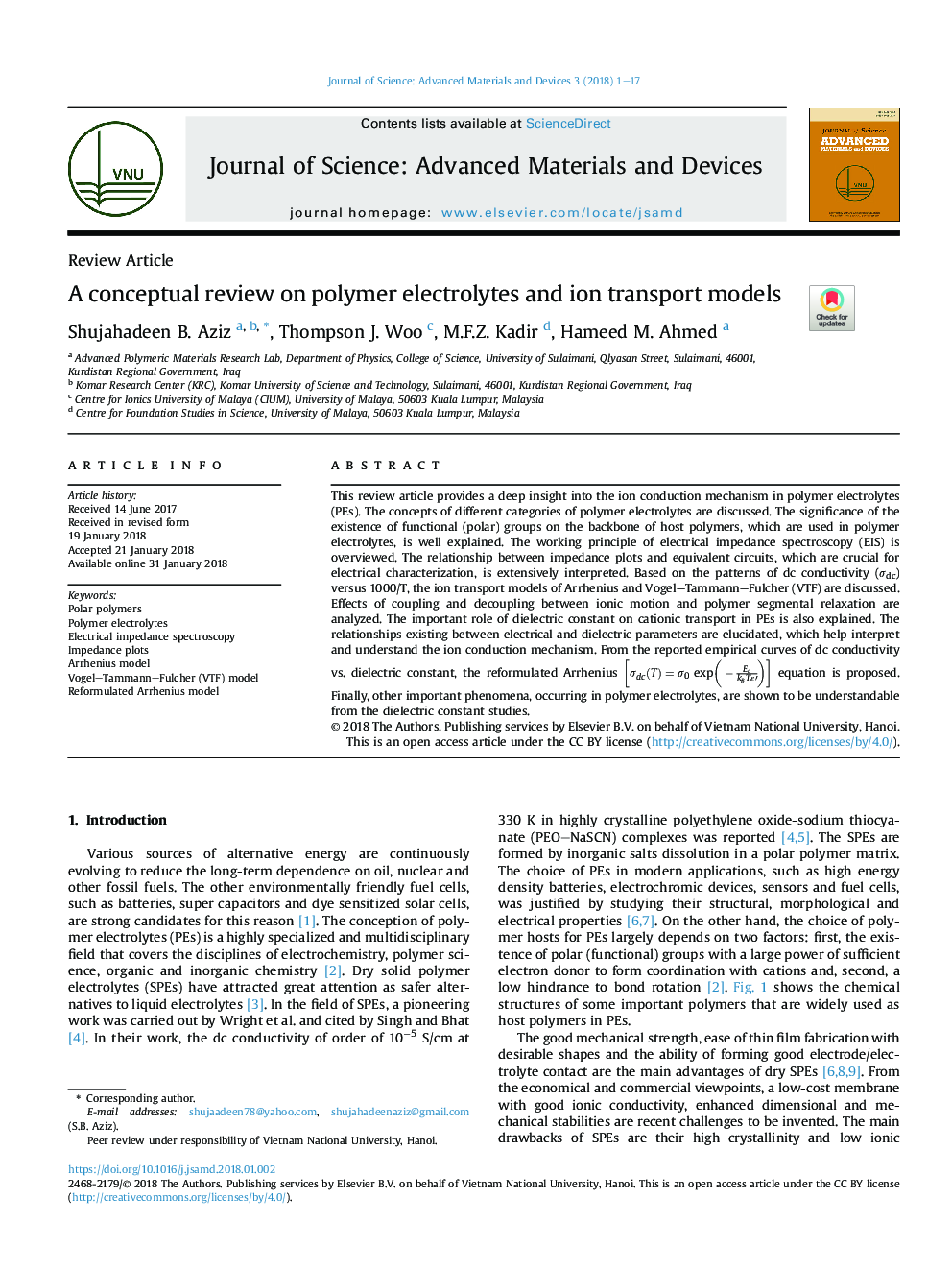| Article ID | Journal | Published Year | Pages | File Type |
|---|---|---|---|---|
| 7904259 | Journal of Science: Advanced Materials and Devices | 2018 | 17 Pages |
Abstract
This review article provides a deep insight into the ion conduction mechanism in polymer electrolytes (PEs). The concepts of different categories of polymer electrolytes are discussed. The significance of the existence of functional (polar) groups on the backbone of host polymers, which are used in polymer electrolytes, is well explained. The working principle of electrical impedance spectroscopy (EIS) is overviewed. The relationship between impedance plots and equivalent circuits, which are crucial for electrical characterization, is extensively interpreted. Based on the patterns of dc conductivity (Ïdc) versus 1000/T, the ion transport models of Arrhenius and Vogel-Tammann-Fulcher (VTF) are discussed. Effects of coupling and decoupling between ionic motion and polymer segmental relaxation are analyzed. The important role of dielectric constant on cationic transport in PEs is also explained. The relationships existing between electrical and dielectric parameters are elucidated, which help interpret and understand the ion conduction mechanism. From the reported empirical curves of dc conductivity vs. dielectric constant, the reformulated Arrhenius [Ïdc(T)=Ï0exp(âEakBTεâ²)] equation is proposed. Finally, other important phenomena, occurring in polymer electrolytes, are shown to be understandable from the dielectric constant studies.
Related Topics
Physical Sciences and Engineering
Materials Science
Ceramics and Composites
Authors
Shujahadeen B. Aziz, Thompson J. Woo, M.F.Z. Kadir, Hameed M. Ahmed,
